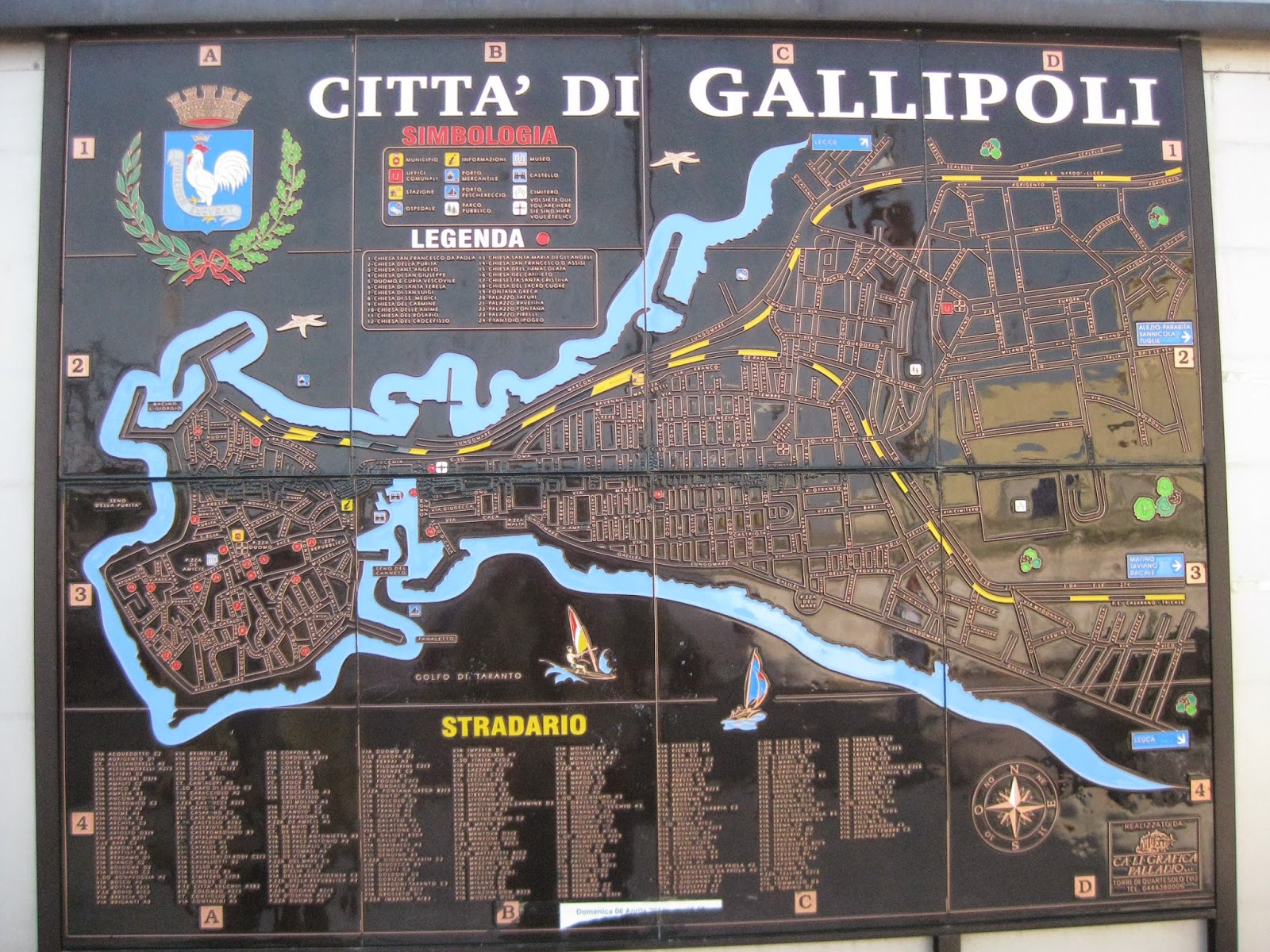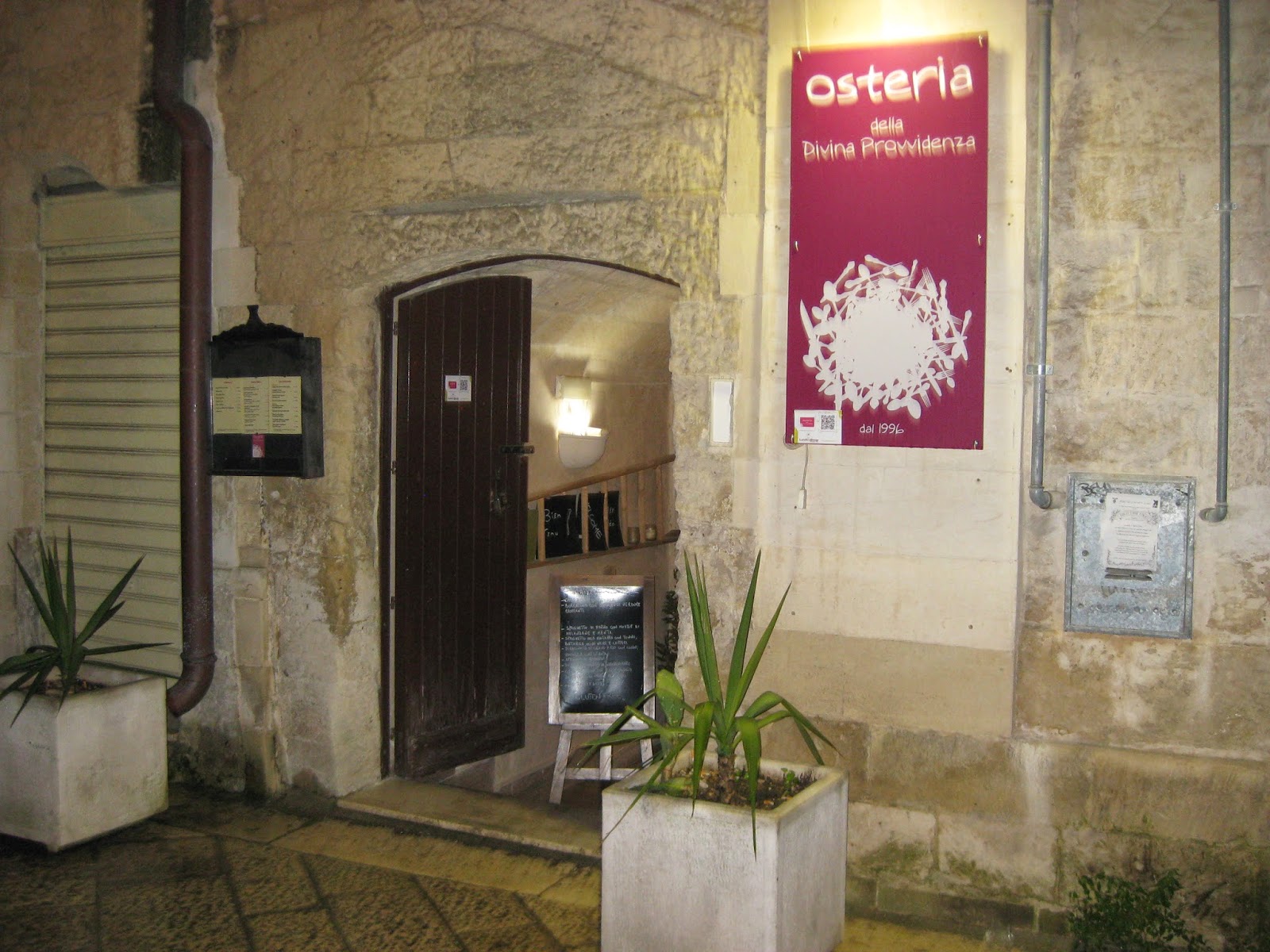Mottola

Leaving Alberobello we decided to take the scenic route to Matera knowing that this would add a great deal of time to our route because of the absence of most road signs. Despite having a map of the area we found that the map had few road numbers so this, together with roads themselves having few signs, it always took us twice as long--but that is part of the adventure.
 |
| 1023 - building the castle |
 |
| 1080 - fighting the Normans |
Wanting to find a pleasant location for lunch, we struggled through a few large towns and then set our sites on the hilltop town of Mottola. This small and quite lovely town has been inhabited from the dawn of history.
Strolling through town in search of a bar (in the Italian sense of the word!) for lunch, we came across the town square which contained a labyrinth of eight mosaics representing battles with the Normans and other invaders from as early as 1064--truly fascinating. The bar owner could not have been friendlier, and provided us with great panini! People from the southern regions show incredible hospitality and warmth.
Matera
After reconnecting with the main road, we finally arrived in Matera.
The first challenge was trying to weave our way through the old city to get to our hotel, the Palazzo Gattini, which sat at the top of the hill overlooking the gorge, the town, the rupestrian churches (churches built deep into the rocks), and the "sassi", the ancient cave dwellings. We happily handed over the keys to the car to the hotel staff who took care of putting it in a garage.
Matera is know as the subterranean city because of the layers the town descending down into the gorge. Sassi are ancient cave dwellings which originate from prehistoric times and are thought to be some of the first human settlements in Italy.
 |
| Our terrace, looking out to the earliest caves |
 |
| Matera town center |
The houses are dug into the rock so that the streets in some parts of town are actually on the rooftops of other houses. A friend who attends writing conferences in Matera twice a year suggested a guide, and so we took a fascinating walking tour up and down through the town and through its fascinating - if turbulent - history.
Carlo Levi's book, Christ Stopped at Eboli, published in the 1950s, described the dire conditions of the families still living in the caves without water, electricity or sanitary facilities. As a result, Matera quickly developed the reputation of being the shame of Italy. The government forcefully relocated most of the population of the Sassi to areas of the developing modern city.
 |
| Ancient frescoes in a rupestrian church |
 |
| A happy espresso drinker! |
Only 20 years ago, the government decided to provide basic electricity, water and sewage infrastructure, and started permitting people to move back if they would fix up the Sassi, and either live in them themselves, or start a business (B&B, artisan shop, etc.). Even the five-star Palazzo Gattini in which we stayed had been abandoned until recently.
The town has since come roaring back to life with restaurants, inns, and bars. Much to Lee's delight, he discovered incredibly rich coffee served in Matera. He even sweet-talked the owner of a favorite caffè to sell him some beans to bring back to friends here in Tuscany who are equally as passionate about their coffee!
The Basilicata region is also known internationally for its widely-acclaimed Aglianico wines, which reach their peak in the Vulture area. This region, on the slopes of a long-dormant volcano, lies about a two hour drive west of Matera, deep in the heart of Basilicata. We couldn't pass up this opportunity to visit first-hand the region in which these blockbuster wines are produced.
 |
| Armando Martino, a main producer of Aglianico |
These wines are characterized by ferocious tannins, which take several years of aging to mellow out. It was well worth the visit, albeit with the, by now, usual navigational challenges. And later that night during dinner, we of course enjoyed a fine bottle of Aglianico del Vulture!






























